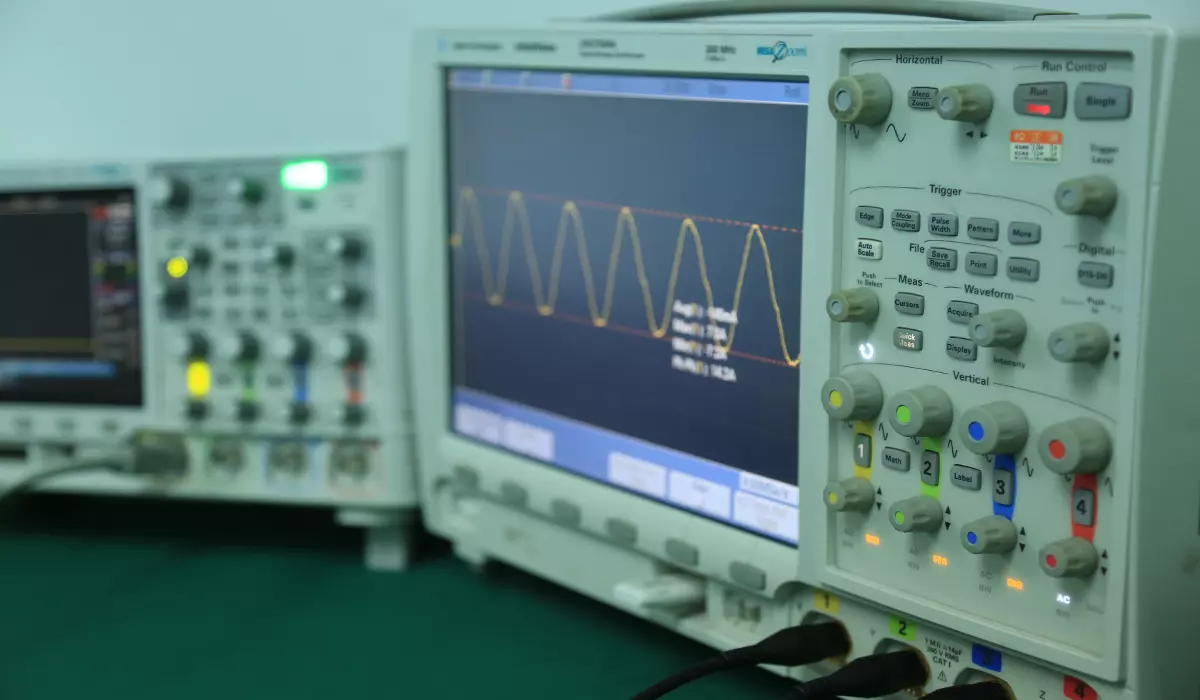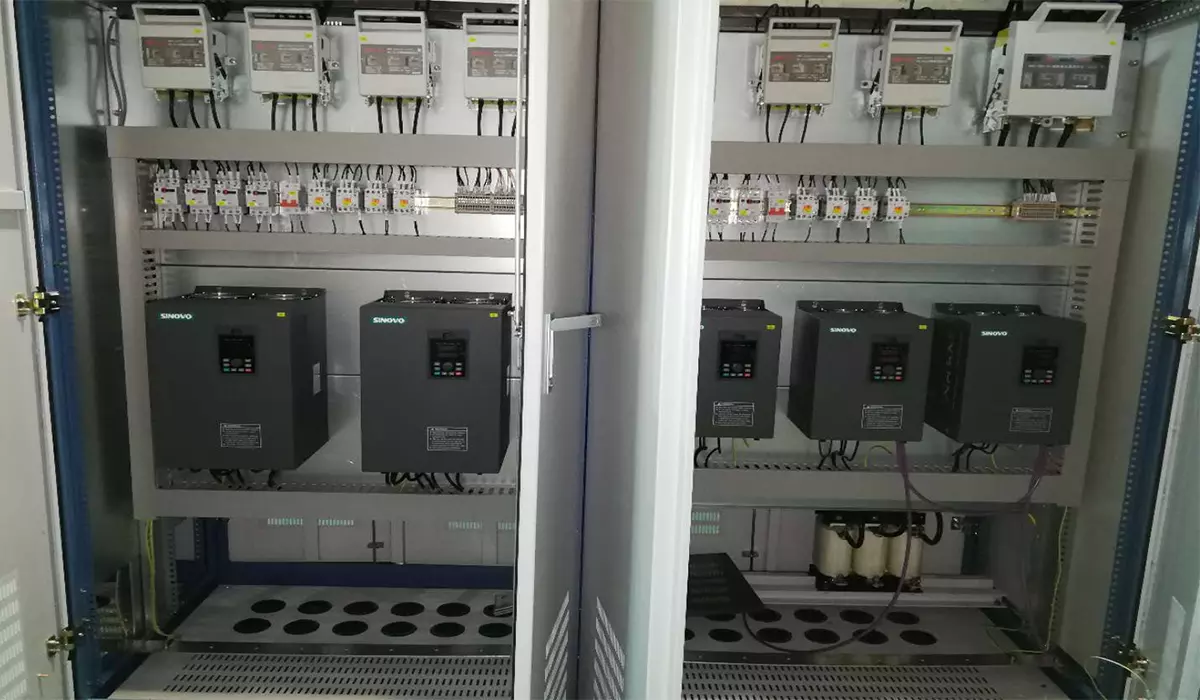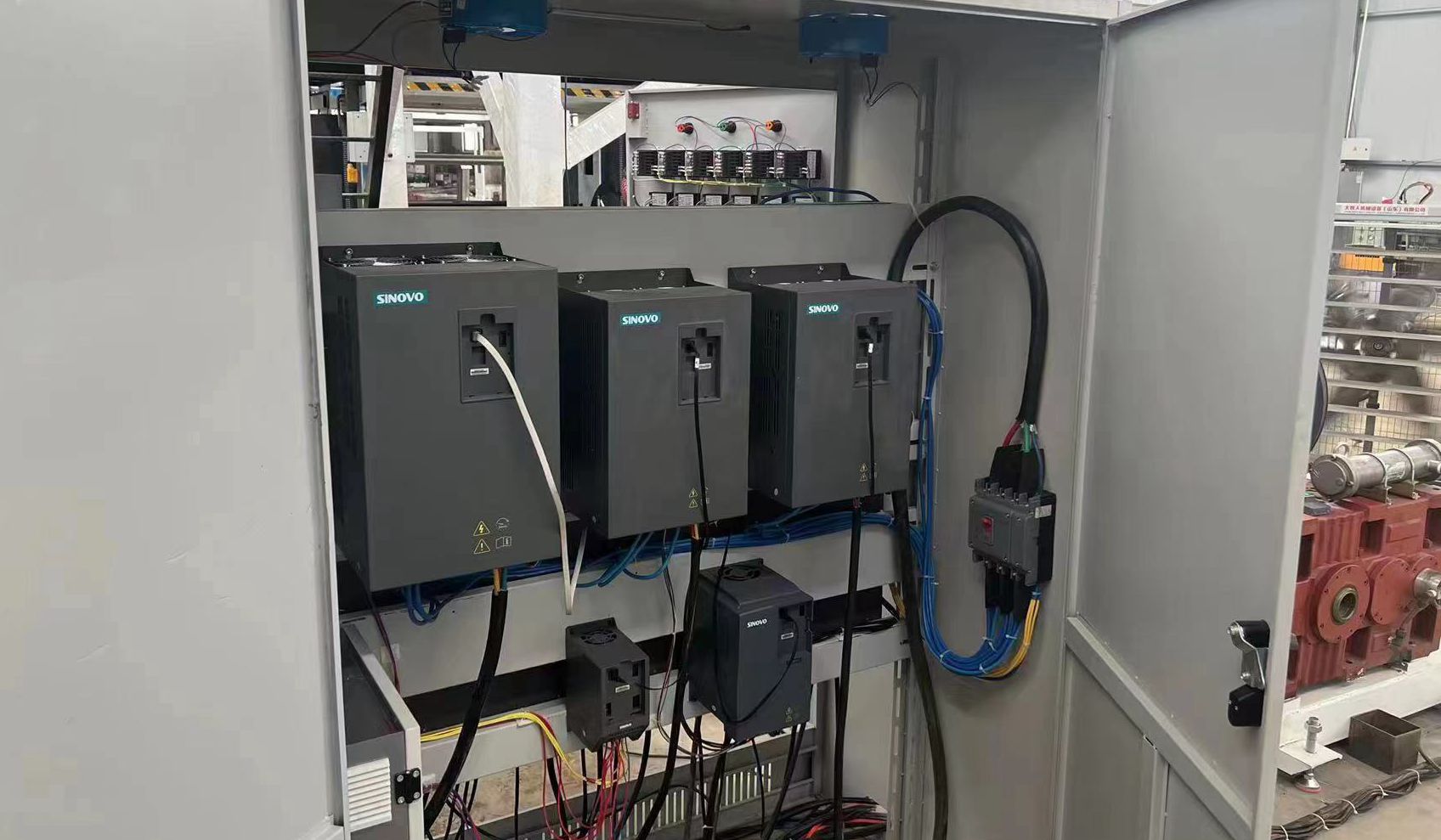The application of frequency converters in the pharmaceutical industry, with the improvement of people’s living standards, the demand for drug varieties is increasing: for this reason, all pharmaceutical factories are working hard to develop new drugs with high quality to meet people’s needs. Among them, antibiotics are used in a large amount and have many varieties, and are one of the drugs that urgently need to be developed.
1. The pharmaceutical equipment is modified by frequency conversion speed regulation
At present, the main equipment for the production of antibiotics is a fermenter with a capacity of 5-40t. Each factory has fermentation tanks of different capacities, ranging from a few to more than ten. Most domestic fermentation tanks are driven by a single speed, which leads to low yield of medicines and high energy consumption. The same fermentation tank cannot produce many kinds of medicines, and the production cycle is long. For this reason, it is urgent to carry out technological transformation to the fermenter. At present, the best way is to use the frequency converter to carry out technical transformation to eliminate the above-mentioned shortcomings. After being transformed with a frequency converter, it can not only fully meet the process requirements, but also facilitate speed regulation, increase the fermentation efficiency by 10%, and the economic benefits are very considerable. It can not only adjust the speed, but also save energy, killing two birds with one stone. The payback period of using frequency conversion speed regulation is generally about 1 year. To this end, many pharmaceutical factories are planning to carry out technological transformation.

2. Analysis of pharmaceutical fermentation process
Antibiotics such as penicillin, streptomycin, tetracycline, chlortetracycline, erythromycin, neomycin, etc., are produced using fermenters. Although the production cycle of different strains is different, ranging from dozens of hours to hundreds of hours, the temperature, humidity, oxygen content, rotation speed, and pressure are also different; even the same strain has its own process conditions and parameters. But there are three stages in the fermentation process that are the same, namely:
①Anti-oxidation period Accelerates the growth of the sample strains and takes a short time;
②Production period: Make the bacteria grow to a certain concentration, and the time is long;
③Stable period: The stable growth of strains improves the qualified rate, and the time is relatively short.
After analyzing the fermentation curve n=f(t), there are roughly four situations. It can be seen from the four fermentation curves that speed regulation is required at different process stages, so frequency converters are selected for automatic control, that is, real-time speed adjustments are realized according to the length of time in different process stages to produce the best results.
Fermentation tank drag is a constant torque load, which can save 15% to 20% of electricity at the same time after reducing the speed.
Of course, the fermentation process is not only related to the rotational speed, but also related to the oxygen supply, viscosity, concentration, temperature, humidity, etc. in the tank. Various factors must be comprehensively explored to formulate the fermentation curve. After the results are obtained through the test, it can be finalized.
Medium and large pharmaceutical factories consume a lot of energy, whether it is electricity, water, steam, compressed air, etc., they consume a lot of energy and have great potential for energy saving. As long as they are aware of energy saving and take certain measures, they will receive good results. Effect. In addition to the main process equipment – fermenter, the pharmaceutical factory also has the following equipment, which is also the object of energy conservation consideration. For example:
1) Water pumps for various purposes – cooling water pumps, circulating water pumps, sewage pumps, clean water pumps, cleaning pumps, domestic water pumps, etc.
2) Mixer, mixing machine, ball forming machine, tablet making machine, pulverizer, etc.
3) The blower, induced draft fan and grate drive motor in the boiler room.
4) Refrigerators, cooling pumps, refrigeration pumps, cooling towers, hot water pumps, purification fans, fresh air fans, return fans, etc. in the central air-conditioning system.
5) Air compressor.
6) Various drying furnaces and ovens.
In short, the pharmaceutical factory is a large energy consumer, and various equipment consumes a lot of electricity. There is a great potential for speed regulation and energy saving by applying frequency conversion, and many equipments are continuously operated, and the number of operating days per year is long. As long as the appropriate Energy-saving equipment – frequency converter, can get twice the result with half the effort.
The application of frequency converters in the pharmaceutical industry, with the improvement of people’s living standards, the demand for drug varieties is increasing: for this reason, all pharmaceutical factories are working hard to develop new drugs with high quality to meet people’s needs. Among them, antibiotics are used in a large amount and have many varieties, and are one of the drugs that urgently need to be developed.
1. The pharmaceutical equipment is modified by frequency conversion speed regulation
At present, the main equipment for the production of antibiotics is a fermenter with a capacity of 5-40t. Each factory has fermentation tanks of different capacities, ranging from a few to more than ten. Most domestic fermentation tanks are driven by a single speed, which leads to low yield of medicines and high energy consumption. The same fermentation tank cannot produce many kinds of medicines, and the production cycle is long. For this reason, it is urgent to carry out technological transformation to the fermenter. At present, the best way is to use the frequency converter to carry out technical transformation to eliminate the above-mentioned shortcomings. After being transformed with a frequency converter, it can not only fully meet the process requirements, but also facilitate speed regulation, increase the fermentation efficiency by 10%, and the economic benefits are very considerable. It can not only adjust the speed, but also save energy, killing two birds with one stone. The payback period of using frequency conversion speed regulation is generally about 1 year. To this end, many pharmaceutical factories are planning to carry out technological transformation.

2. Analysis of pharmaceutical fermentation process
Antibiotics such as penicillin, streptomycin, tetracycline, chlortetracycline, erythromycin, neomycin, etc., are produced using fermenters. Although the production cycle of different strains is different, ranging from dozens of hours to hundreds of hours, the temperature, humidity, oxygen content, rotation speed, and pressure are also different; even the same strain has its own process conditions and parameters. But there are three stages in the fermentation process that are the same, namely:
①Anti-oxidation period Accelerates the growth of the sample strains and takes a short time;
②Production period: Make the bacteria grow to a certain concentration, and the time is long;
③Stable period: The stable growth of strains improves the qualified rate, and the time is relatively short.
After analyzing the fermentation curve n=f(t), there are roughly four situations. It can be seen from the four fermentation curves that speed regulation is required at different process stages, so frequency converters are selected for automatic control, that is, real-time speed adjustments are realized according to the length of time in different process stages to produce the best results.
Fermentation tank drag is a constant torque load, which can save 15% to 20% of electricity at the same time after reducing the speed.
Of course, the fermentation process is not only related to the rotational speed, but also related to the oxygen supply, viscosity, concentration, temperature, humidity, etc. in the tank. Various factors must be comprehensively explored to formulate the fermentation curve. After the results are obtained through the test, it can be finalized.
Medium and large pharmaceutical factories consume a lot of energy, whether it is electricity, water, steam, compressed air, etc., they consume a lot of energy and have great potential for energy saving. As long as they are aware of energy saving and take certain measures, they will receive good results. Effect. In addition to the main process equipment – fermenter, the pharmaceutical factory also has the following equipment, which is also the object of energy conservation consideration. For example:
1) Water pumps for various purposes – cooling water pumps, circulating water pumps, sewage pumps, clean water pumps, cleaning pumps, domestic water pumps, etc.
2) Mixer, mixing machine, ball forming machine, tablet making machine, pulverizer, etc.
3) The blower, induced draft fan and grate drive motor in the boiler room.
4) Refrigerators, cooling pumps, refrigeration pumps, cooling towers, hot water pumps, purification fans, fresh air fans, return fans, etc. in the central air-conditioning system.
5) Air compressor.
6) Various drying furnaces and ovens.
In short, the pharmaceutical factory is a large energy consumer, and various equipment consumes a lot of electricity. There is a great potential for speed regulation and energy saving by applying frequency conversion, and many equipments are continuously operated, and the number of operating days per year is long. As long as the appropriate Energy-saving equipment – frequency converter, can get twice the result with half the effort.
continue reading
Related Posts
Variable Frequency Drives (VFDs) and motors are integral components in industrial automation, each serving distinct yet interconnected roles in controlling […]
Variable frequency motors (VFMs) are crucial in modern industrial applications due to their efficiency and precise control over motor speed […]
Variable Frequency Technology (VFT) is increasingly being recognized as a game-changer in the industrial automation sector, particularly in applications involving […]



